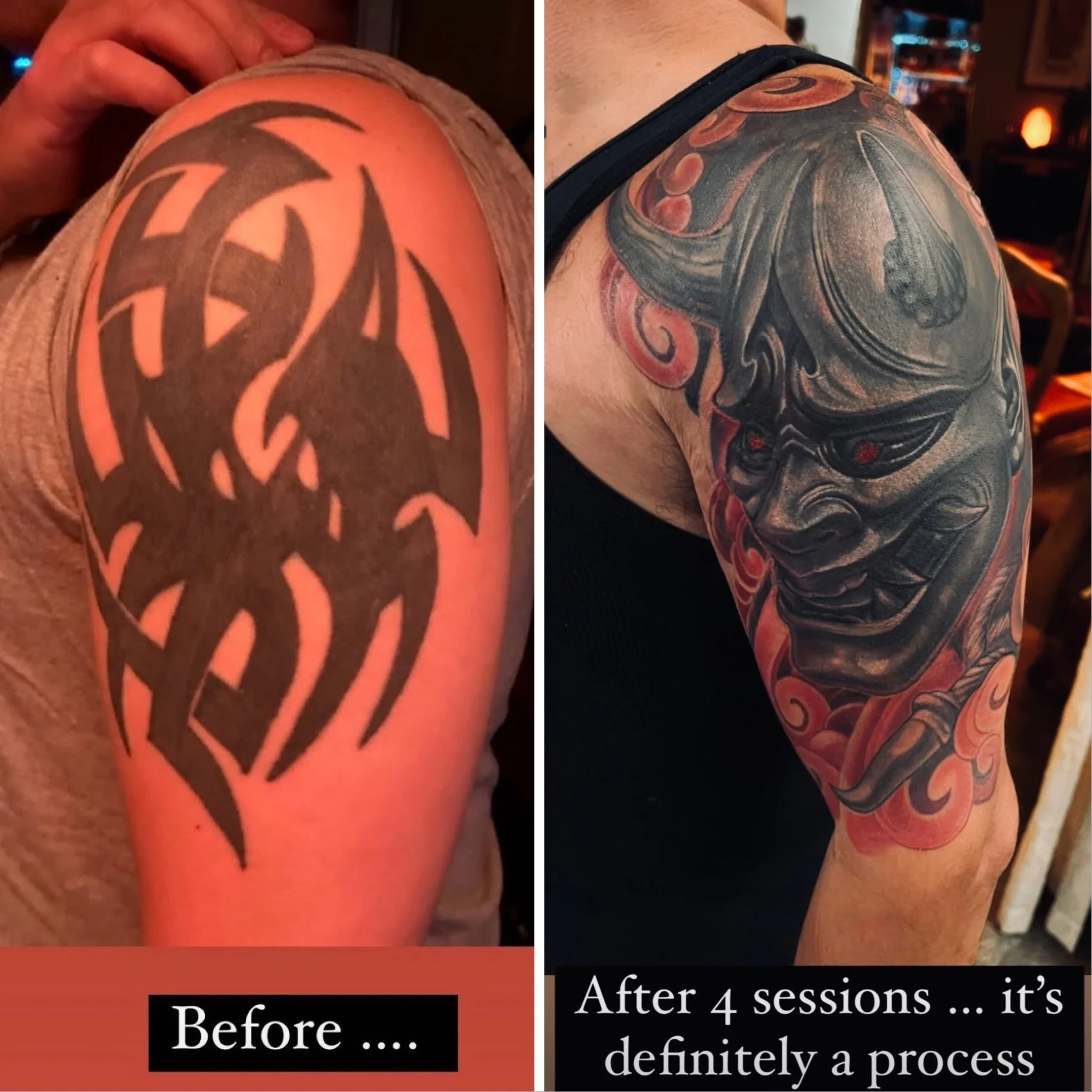Cover-Up Tattoos: What They Are and How We Approach Them
At Bohemian Social Club Tattoo, we believe every tattoo should be something you’re proud to wear. But sometimes, a piece from the past no longer fits your style, your story, or your standards. That’s where a cover-up tattoo comes in.
A cover-up is the process of designing and tattooing a new piece over an existing one, with the goal of transforming, hiding, and elevating what’s already there. It’s part artistry, part strategy, and it takes experience to get right.
The Goal of a Cover-Up
A well-executed cover-up doesn’t just hide the old tattoo—it makes it disappear into the new design. The best results usually involve a detailed subject that’s large enough to break up and disguise the lines, shapes, and tones of the existing tattoo.
The more complexity and texture the new piece has, the easier it is to redirect the viewer’s eye away from the old design. Think of it as reworking a painting—layering, shading, and shaping until the original image is no longer visible.
The Process
Cover-ups aren’t typically a “one-and-done” deal. Depending on the complexity and how much of the old tattoo needs to be masked, the process can take 3–5 sessions (sometimes more).
Color and grey tones both work beautifully for cover-ups, but warm tones like yellow, orange, and red can be tricky—they’re semi-transparent, which means they may not fully hide the tattoo underneath. For most projects, cooler tones, deeper colors, and blacks work better for complete coverage.
The little details matter—so it’s essential to discuss your vision with your artist and trust their recommendations.
Considering Laser Removal
In some cases, partial laser removal before a cover-up can make a huge difference. Lightening the old tattoo gives the artist more flexibility, requires fewer sessions, and can lead to a more seamless result.
Laser isn’t always necessary, but for certain designs and goals, it can be a worthwhile step before committing to the new piece.
The Long View
It’s important to remember that cover-ups can be hard to gauge years down the road. Colors can fade, skin changes, and tattoo pigment may settle differently. While I haven’t seen some of my older cover-ups five or more years later, I would love to see how they’ve aged—and that’s why follow-up photos are always encouraged.
Final Thoughts
A cover-up tattoo is a collaboration. It’s about blending creativity, technical skill, and problem-solving to turn something you no longer love into something you’ll be proud to wear for life.
If you’re considering a cover-up, bring your ideas, your questions, and your patience—we’ll bring the vision and the craftsmanship.

